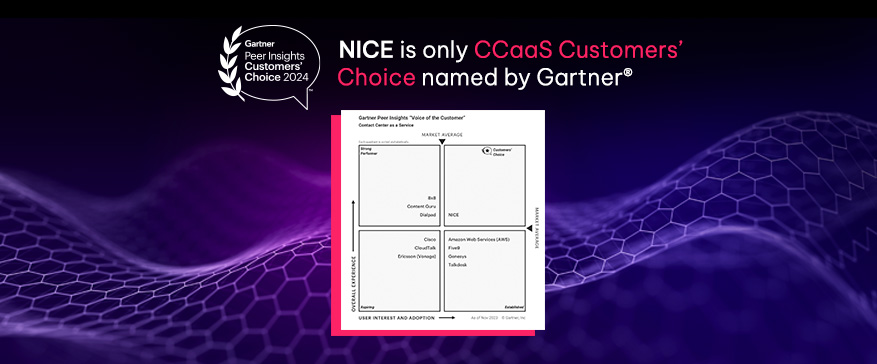CXone Translates Efficiency into Customer Experience Excellence for LanguageLoop
How Does No Caller ID Work?
When a phone call is made, Caller ID information is normally transmitted as part of the signaling data between the calling and receiving devices. This information includes the phone number of the caller and, in some cases, additional details like the caller’s name or business. However, when No Caller ID is enabled, this information is blocked or withheld.Retrieving a caller ID number for incoming calls marked as 'no caller ID' is important for identifying unknown callers and ensuring you can respond appropriately.Here are the most common ways No Caller ID works:- Caller Blocking Codes: In many regions, dialing a special prefix before the recipient’s phone number will block Caller ID for that specific call. For example:
- In the United States, dialing *67 before a number hides the Caller ID.
- In the United Kingdom, dialing 141 achieves the same effect. These codes temporarily suppress the transmission of Caller ID, ensuring the recipient sees “No Caller ID” or “Private Number.”
- Phone Settings: Most smartphones have built-in options to hide Caller ID for all outgoing calls. For instance:
- On iPhones: Navigate to Settings > Phone > Show My Caller ID and toggle the feature off.
- On Android: Go to Phone App > Settings > Call Settings > Additional Settings > Caller ID and select “Hide Number.” These changes apply to all outgoing calls until you turn the feature off.
- Carrier Services: Some telecommunications providers offer permanent Caller ID blocking as part of their service packages. Once enabled, all outgoing calls from the subscriber’s number will display as private or anonymous, unless manually overridden for specific calls.
- VoIP Services: Internet-based calling services, such as Skype or Google Voice, often allow users to hide their Caller ID directly through their app settings.
Caller ID vs. Unknown Caller
Understanding the distinction between 'No Caller ID' and 'Unknown Caller' is crucial. 'No Caller ID' indicates a caller who has deliberately concealed their identity, often using the methods described above. In contrast, 'Unknown Caller' refers to situations where the phone service provider is unable to identify the caller due to network issues or other technical problems. Recognizing these terms can help users identify potentially suspicious calls and protect their personal data.Understanding No Caller ID
No caller ID is a feature that allows callers to hide their phone number from the recipient’s caller ID display
No Caller ID is a feature that allows callers to hide their phone number from the recipient’s caller ID display. This feature is often used by individuals and organizations who want to keep their phone number private. When a caller uses this feature, their phone number will not be displayed on the recipient’s caller ID, and the recipient will only see “No Caller ID” or “Unknown Caller” on their phone screen. This can be useful for maintaining privacy, but it also means that the recipient has no way of knowing who is calling, which can be a double-edged sword.It is often used by individuals and organizations who want to keep their phone number private
Individuals and organizations use No Caller ID for various reasons, including keeping their mobile phone number private, making anonymous complaints, or concealing their identity for malicious purposes. Legitimate reasons for using No Caller ID include preventing a high volume of return phone calls, maintaining privacy, and controlling how others use their contact information. However, it’s important to be aware that while there are valid reasons for using this feature, it can also be exploited by those with less honorable intentions.Definition of No Caller ID
No Caller ID is a feature that allows callers to hide their phone number and identity from the recipient’s phone screen. When a call is made using No Caller ID, the recipient will see messages like “No Caller ID,” “Unknown Caller,” or “Private Number” instead of the caller’s actual number and name. This feature is often used to maintain privacy and anonymity, ensuring that the caller’s information remains concealed during the call.How No Caller ID Works
No Caller ID works by blocking the caller’s phone number and identity from being transmitted to the recipient’s phone. This can be achieved in several ways. One common method is by dialing a specific code, such as *67 in the United States, before making the call. This code instructs the phone service provider to withhold the caller’s information. Alternatively, users can set up No Caller ID through their phone’s settings or by contacting their phone service provider. When a call is made with No Caller ID, the recipient’s phone will display “No Caller ID” or “Unknown Caller,” effectively masking the caller’s identity.Callers can place a single call with No Caller ID by dialing a special code before the recipient’s phone number
To place a single call with No Caller ID, callers can dial a special code before the recipient’s phone number. For example, dialing *67 before the recipient’s phone number will block the caller’s ID for that specific call. This feature is available on most phone service providers and can be used on both landlines and mobile phones. By using this method, callers can ensure their number remains hidden for individual calls without changing their phone settings permanently.Some phone service providers also offer the option to turn on No Caller ID for all calls
Some phone service providers offer the option to turn on No Caller ID for all calls. This feature can be activated by following the instructions provided by the phone service provider, which may vary depending on the provider and the type of phone being used. Once activated, all outgoing calls will be made with No Caller ID, and the recipient will not be able to see the caller’s phone number. This can be particularly useful for those who need to maintain a high level of privacy consistently.Differences Between “Unknown Caller” and “No Caller ID”
While both “Unknown Caller” and “No Caller ID” indicate that the caller’s information is not displayed, they stem from different circumstances. “Unknown Caller” typically occurs when the phone service provider is unable to identify the caller due to technical issues or network limitations. This means the caller’s information is not available to be displayed. On the other hand, “No Caller ID” is a deliberate action taken by the caller to block their phone number and identity from being shown. Understanding this distinction can help recipients better manage and respond to incoming calls.Who Uses No Caller ID?
Individuals and Organizations
No Caller ID is utilized by a diverse range of users, including both individuals and organizations. Individuals often use No Caller ID to protect their privacy, ensuring their phone number and identity remain hidden when making calls. This can be particularly useful when contacting strangers, businesses, or online marketplaces. Organizations, such as telemarketing companies and government agencies, may use No Caller ID to manage high volumes of return phone calls or to maintain confidentiality in sensitive communications. However, it’s important to note that scammers and fraudsters also exploit No Caller ID to conceal their identity and carry out malicious activities. By understanding who uses No Caller ID and why, recipients can better navigate and manage these anonymous calls.Risks and Consequences
Scams and phishing attempts from unknown callers
One of the risks associated with No Caller ID is the potential for scams and phishing attempts from unknown callers. Scammers and fraudsters often use No Caller ID to conceal their identity and make it difficult for recipients to track them down. These scammers may use various tactics, such as pretending to be from a legitimate company or government agency, to trick recipients into revealing sensitive information or sending money. To protect yourself from these types of scams, it’s essential to be cautious when answering unknown calls and never provide personal or financial information to unknown callers. Utilizing features like blocking unknown callers or using third-party apps can also help mitigate these risks.Legal and Ethical Considerations of Spam Calls
While No Caller ID can be used for legitimate purposes, misuse can have legal consequences. Regulations vary by country:- In the U.S., the Truth in Caller ID Act prohibits the transmission of false or misleading Caller ID information with malicious intent.
- In the EU, the ePrivacy Directive and GDPR mandate transparency in communication and allow recipients to opt out of anonymous calls.










